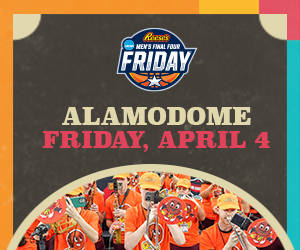One Specific Memory from the Front Line
During the 1969 River Parade, SNCC (Student Non-Violent Coordinating Committee) staged and rallied the largest demonstration in the history of San Antonio. This demonstration was organized in two different places; one in the downtown area and the other in the Victoria Courts (now called Victoria Commons) in a park that still exists behind the old main office. The City of San Antonio was completely taken by surprise by the efforts of the local SNCC chapter. For months SNCC and the African American community had protested the murder of Bobby Joe Phillips by the San Antonio Police Department (SAPD). Phillips was a black construction worker that was savagely beaten by a cowardly mob of SAPD officers who have not been prosecuted to this day. The SNCC move was the result of months of frustration and inaction by the San Antonio City Council and its racist mayor Walter W. McAllister. Rev. Claude W. Black and other civil rights leaders had protested the savage killing to no avail, and had been harassed by local law enforcement officials and racists.
One group of SNCC supporters secretly met at the Victoria Courts Park and planned to walk downtown as the crowds exited the riverwalk. At the same time, another effort was being organized near Houston and St. Mary’s Street. I cannot speak for that one as I was not there, but at the Victoria Courts assembly. We walked along Durango Street (Cesar Chavez Street) and headed North on to Alamo Street. As we walked on Alamo Street we began to sing “Freedom Songs” of the civil rights movement. By the time we reached Commerce Street there were now hundreds of followers coming from two separate directions. As the protesters marched on Houston Street the second wave hooked up with the first. As we turned on to Commerce Street many of those who were on the sidewalk began to spill over into the streets and those who were onlookers joined in as efforts were being made to politicize the crowd with chants and slogans against police abuse in San Antonio. When we came to East Houston Street, and merged with the other SNCC organized demonstration, the ranks of demonstrators now numbered in the thousands. SAPD was powerless to act.
When headed up to Navarro Street and Houston Street our group merged with the larger protest and turned east toward the cradle of slavery-the Alamo. As the protest caught up to the main body of protesters and the two bodies merged together, Police barricades were hurled at the police cars on Navarro Street in front of the old Nix Hospital. As this body of protesters, not all, was forced east and south along Alamo Street, and in front of the Alamo, the protesters found rocks with which to fight back. Police were pounded by a heavy barrage of rocks at one point as the crowd retreated along East Commerce toward the SNCC office on Pine Street. At Pine and East Commerce Streets the crowd broke into a pawn shop and took the weapons in the store. This was not just simply an act of burglary or vandalism, but an act of defiance as SNCC members and others now thought of arming themselves against further police brutality. This incident was both the largest demonstration in the history of San Antonio. Guns were taken from the store, the American Loan Company, now Mark’s Outing Hamburgers, in an effort to show the police that the Black community was tired of abusive SAPD rogue officers like Sgt. Bill Wheilbacher.








